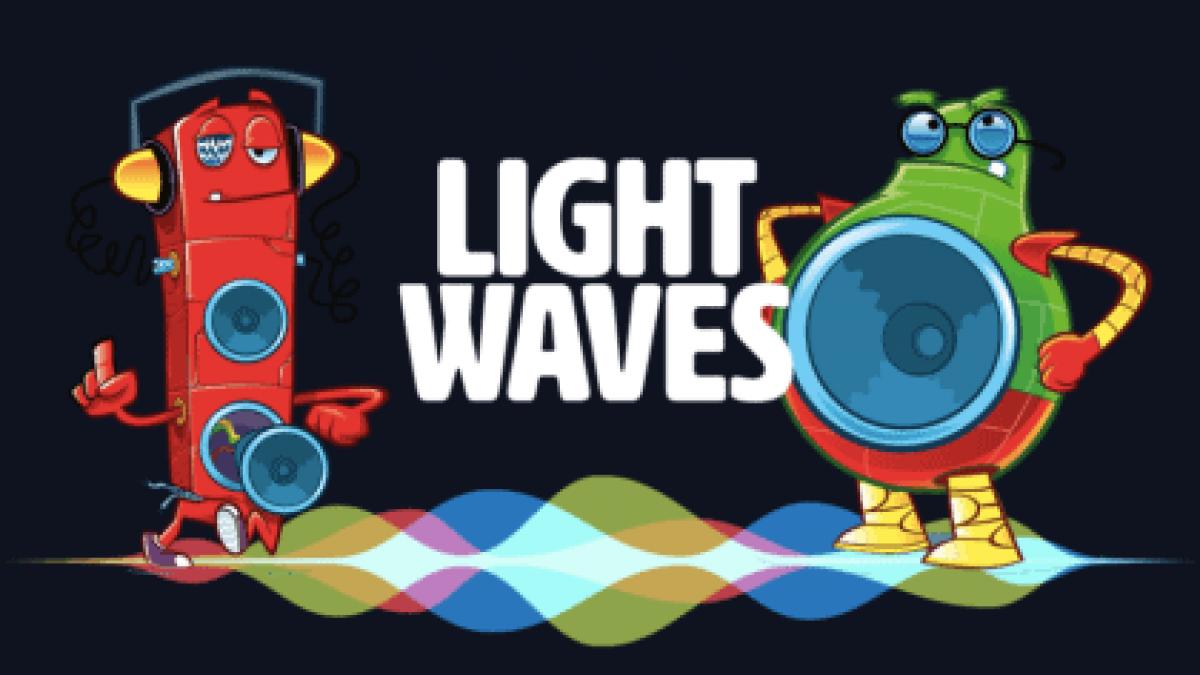We now know a bit more about sound and how it travels from the radio studio to you, but how does light work?
Listen to to this clip…
You should now have a better idea about what light waves are and how they work.
So light comes as waves?
Yes it does. They are similar to sound in that way as sound exists as sound waves.
So light and sound work in the same way then?
Not quite, there are a few differences.
Sound waves can’t travel through empty space whereas light waves can.
This means that light can travel through space which is why we can see stars and why the light from the sun can get to earth.
Light waves also travel much faster than sound waves, this is why you see lightning before you hear the bang.
Embed from Getty Images- Light waves travel at three hundred million kilometres a second
- Sound waves only travel at 0.3 kilometres a second
Light is actually the fastest thing in the universe!
What’s light years?
Even though the word years is in it it’s actually a measure of distance.
It’s the distance light will travel in a year. So a light year is a very big distance!
One light year is actually about 6 million million miles!
Scientists will often use it to describe how far away distant planets and solar systems are. Some are so far away it would be difficult to measure the distance in miles or kilometres as the number would be so big!
Embed from Getty ImagesHow does light make us see things?
Embed from Getty ImagesLight waves go from a light source – like the sun or a light bulb – to everything around like a book you’re reading for example.
The light then bounces off the book and into your eyes which let you see it.
How do mirrors work?
Embed from Getty ImagesIf something is super shiny like a mirror then a lot of light bounces off it which makes it reflect the image it sees.
If you’re standing in front of a mirror, and seeing yourself, then the light is bouncing off you, onto the mirror and then into your eyes which is why you can see yourself.
How do colours work?
You get different colours because of the length of the light waves. For example one length makes red light and another makes blue light.
White light is a mix of all the colours together.
When white light hits certain objects, such as clear glass prisms or even raindrops, sometimes you can see many of them at once, just like a rainbow!
There are seven colours of the spectrum, and they are red, orange, yellow, green, blue, indigo and violet.
There are three primary colours in light, red, green and blue. When light in these colours are added together they make the secondary colours. For example, when you mix red and green light together, you make yellow. But when you add all three primary colours together, you make ‘white light’.

How do we see colours?
If you’re looking at a red jumper then the light from the light source is hitting the jumper and the jumper is absorbing all the colours except for red. The red is being reflected into your eyes.
Embed from Getty ImagesAnd here’s something else you might not know! The light falling on objects can change the colour of things too. If you put some blue cellophane over a torch at night, everything in your room will look blue. And if you look at a green car in the street under an orange streetlight, it can appear to be very different to how it looks in daylight.
That’s because the light hitting the car is missing some of the colours and so even if the car could reflect them, in certain situations, it can’t. The colour has changed. Switch off the lights altogether and everything goes dark!
Your mission is to complete this quiz…
Check back tomorrow for another mission
Add a commentWeek 11: Physics
This week's missions are all about physics! We'll be finding out what sound is and what have waves got to do with it?
More From Week 11: Physics






